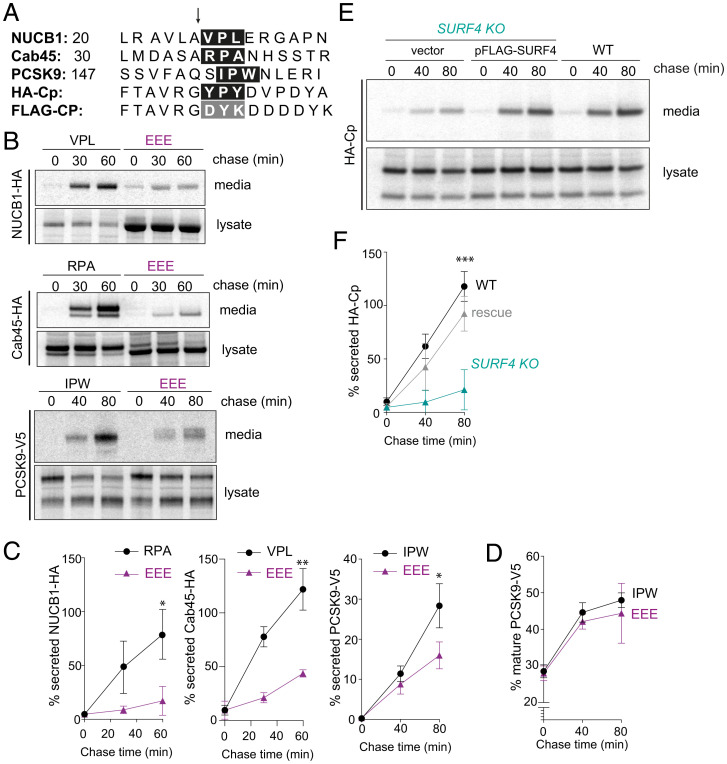Fig. 5.
ER-ESCAPE motifs are necessary and sufficient for SURF4-mediated export. (A) N-terminal sequences of three bona fide SURF4 clients (NUCB1, Cab45, and PCSK9) along with a heterologous SURF4 cargo client (HA-Cp) and a bulk flow marker (FLAG-Cp) that lacks an ER-ESCAPE motif. The arrow indicates the site of signal peptide or propeptide cleavage, and the ER-ESCAPE motif is highlighted in the black box; the equivalent residues that do not form an ER-ESCAPE motif for HA-Cp are highighted in the gray box. (B) Secretion of NUCB1-HA, Cab45-HA, and PCSK9-V5 and their corresponding ER-ESCAPE mutants was examined by pulse–chase. (C) Percentage secretion was quantified by phosphorimage analysis; plots show the mean ± SD of three independent experiments. Statistical test was unpaired t test, *P < 0.05, **P < 0.01. (D) PCSK maturation was quantified by phosphorimage analysis as described in Fig. 1B. Plots show the mean ± SD of three independent experiments. (E) HA-Cp secretion was examined by pulse–chase in WT, SURF4 KO, and SURF4 KO cells complemented with a FLAG-SURF4 rescue plasmid. HA-Cp was immunoprecipitated with α-HA from lysates and conditioned media at the indicated times and detected by SDS-PAGE and autoradiography. (F) Percentage of secreted HA-Cp was quantified by phosphorimage analysis. Plots show the mean ± SD of three independent experiments. Statistical test was a one-way ANOVA with Dunnett’s correction for multiple comparisons, ***P < 0.001. PAGE, polyacrylamide gel electrophoresis.

